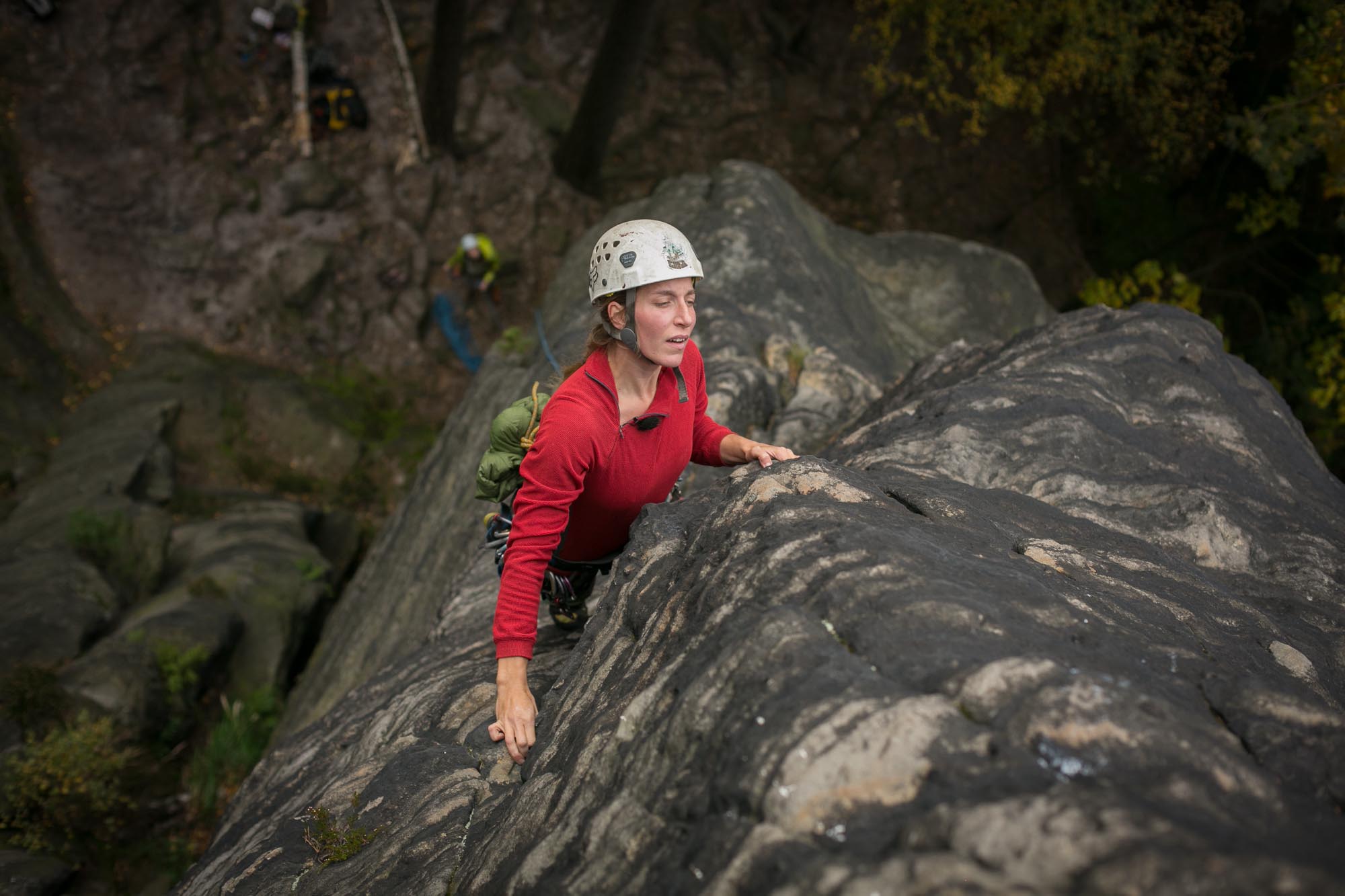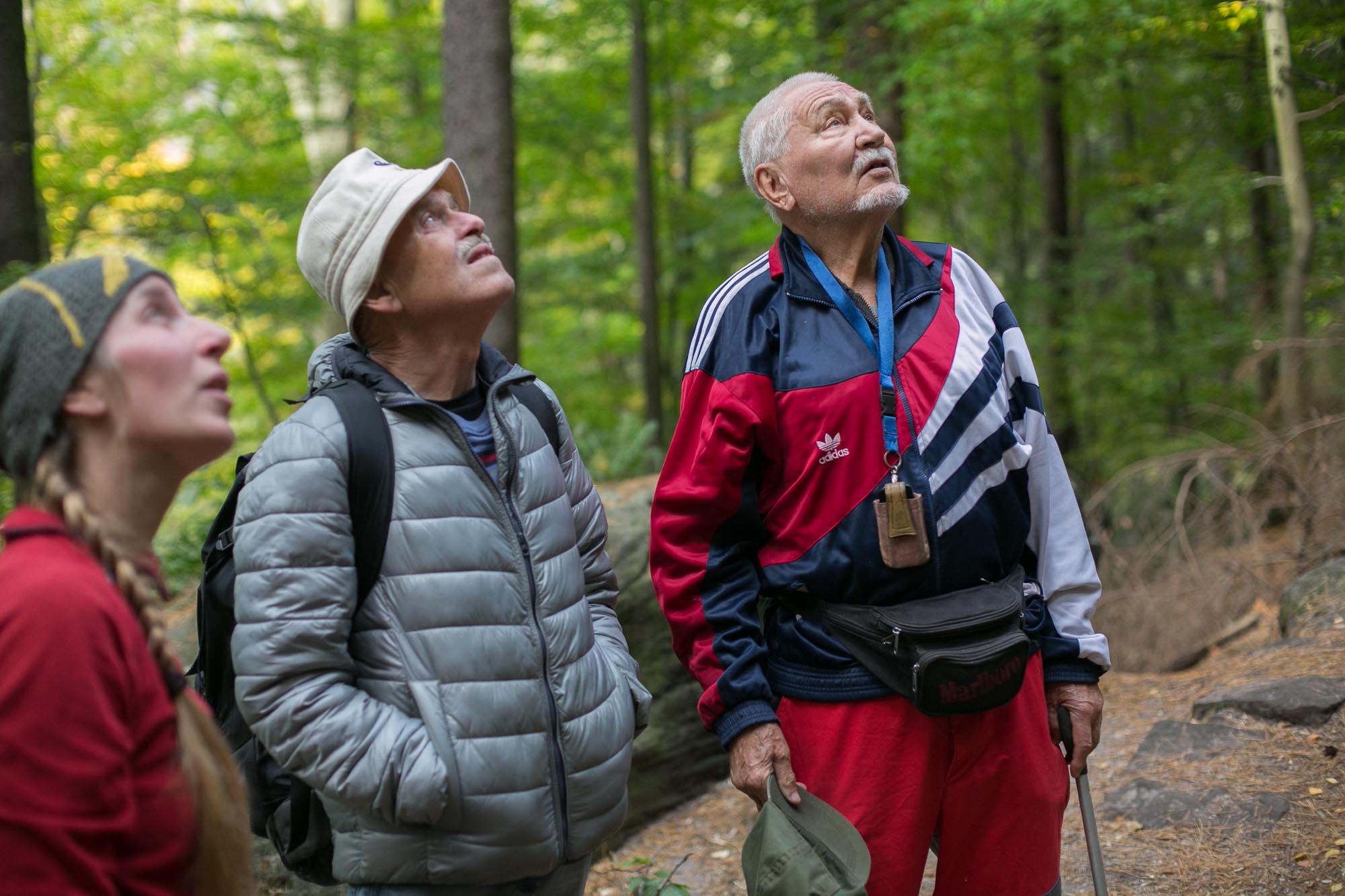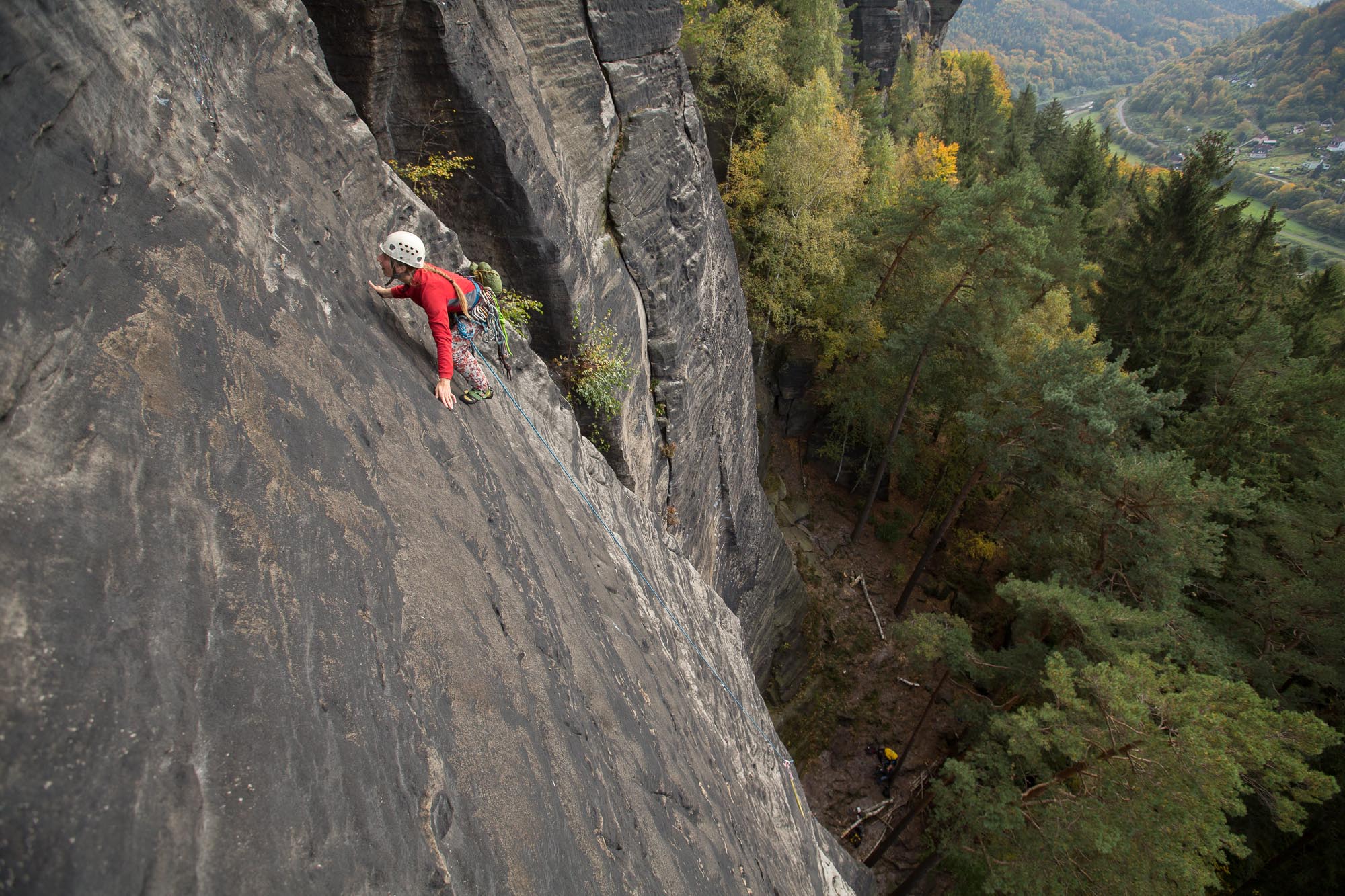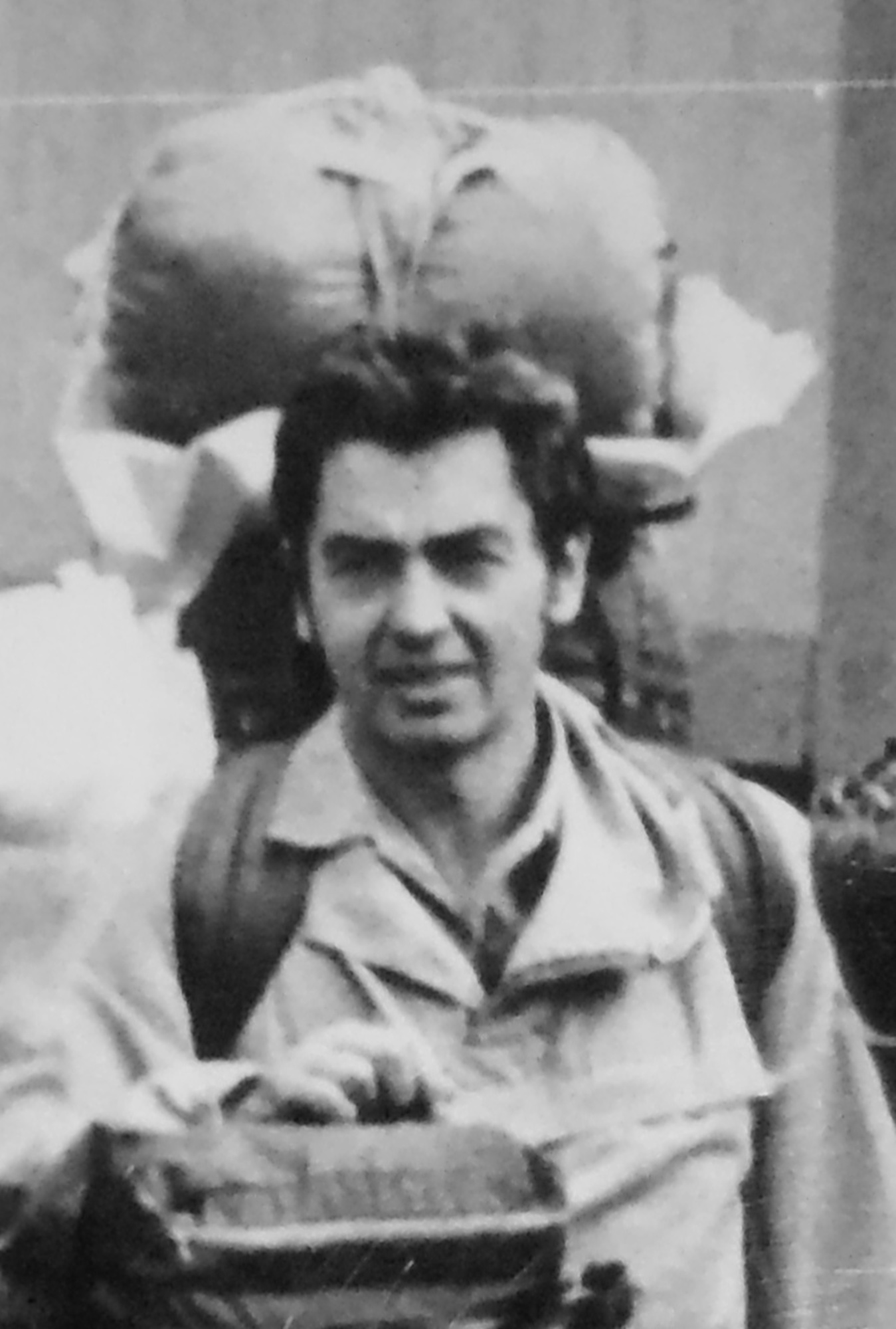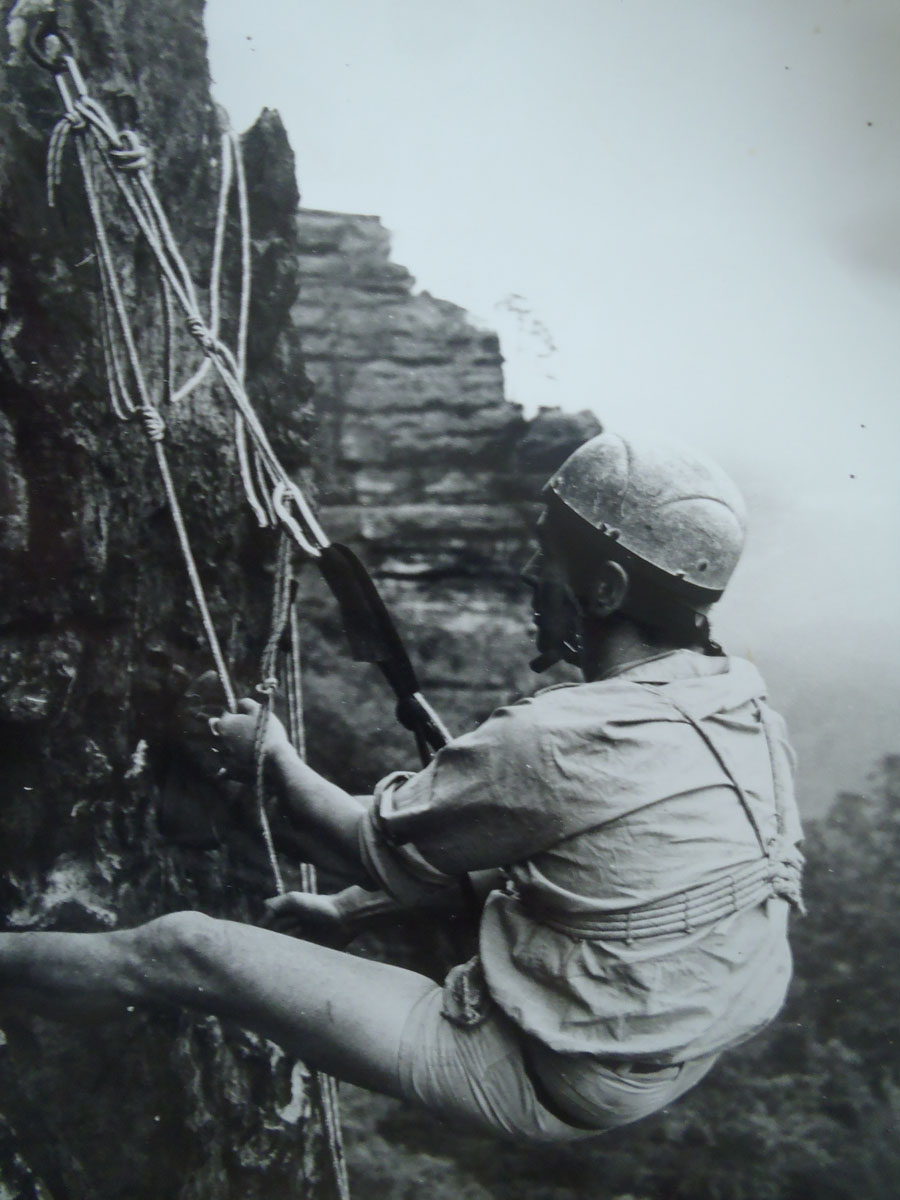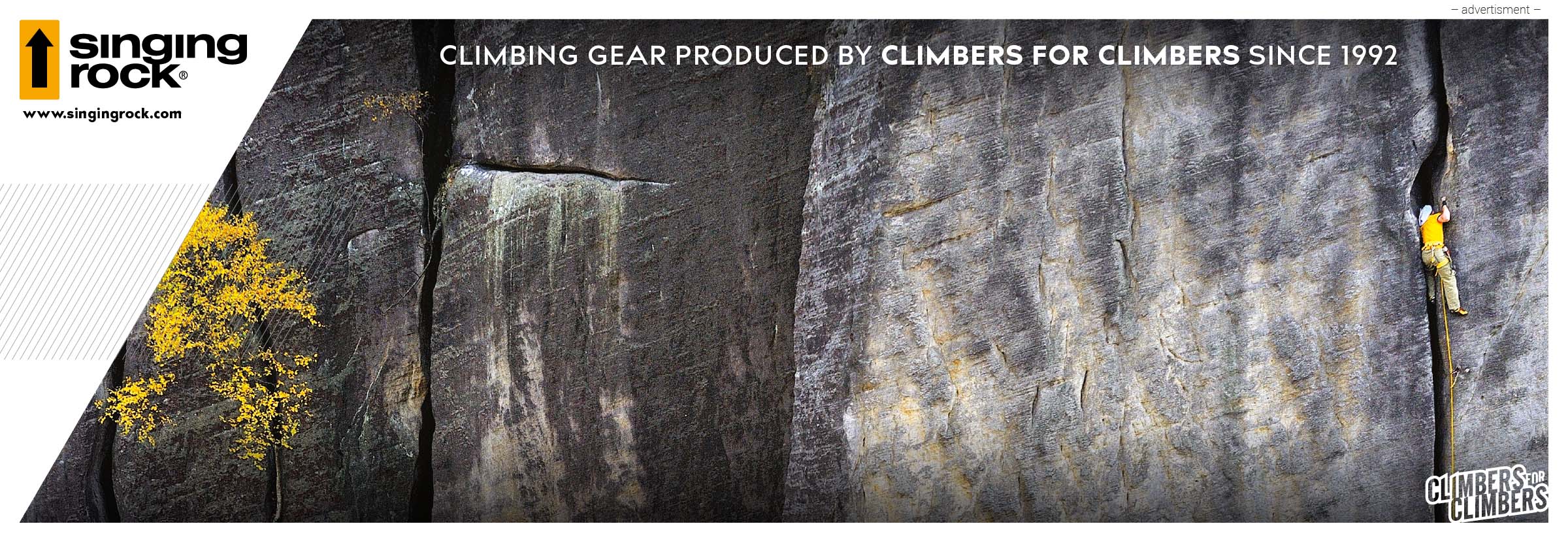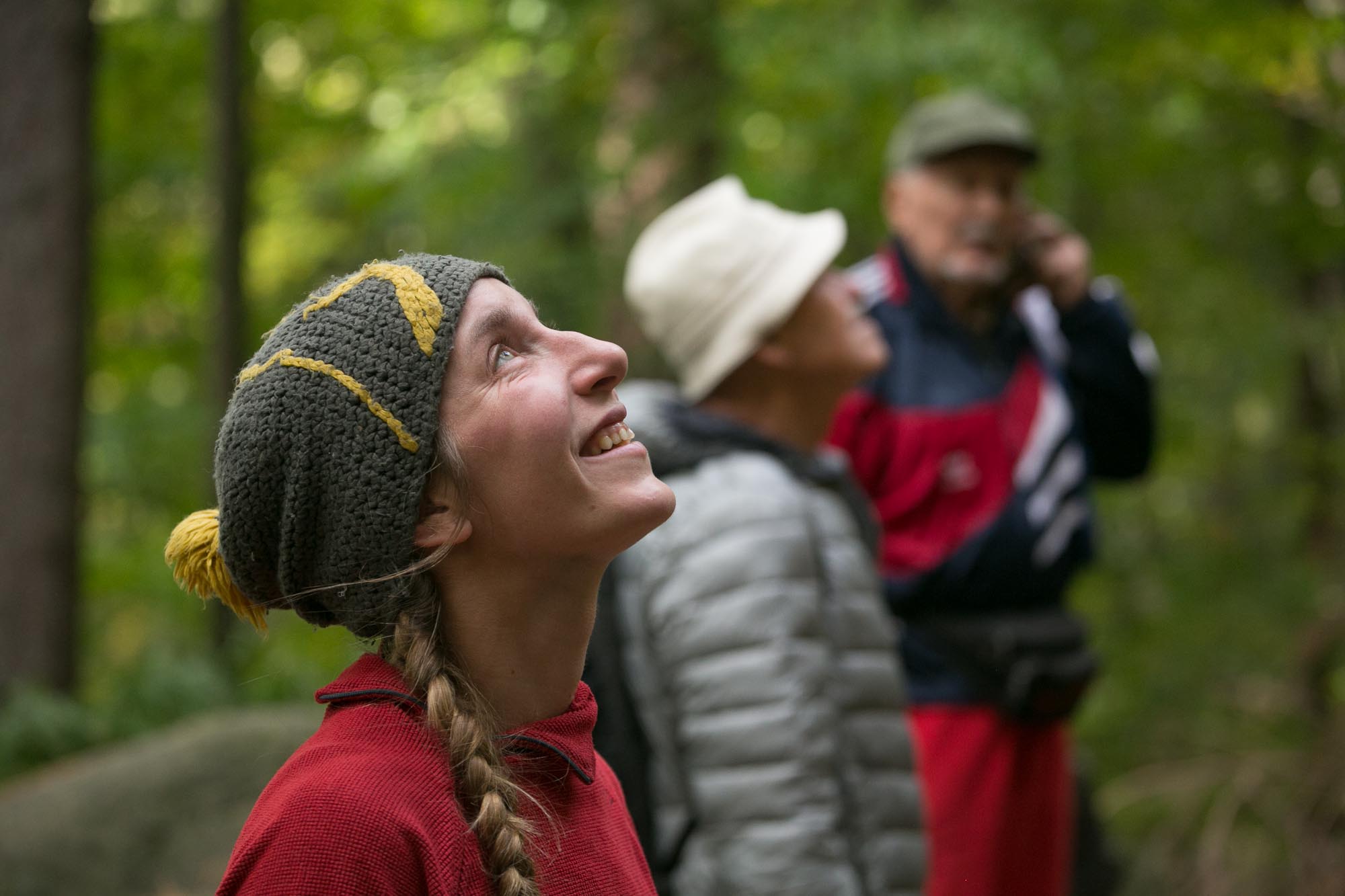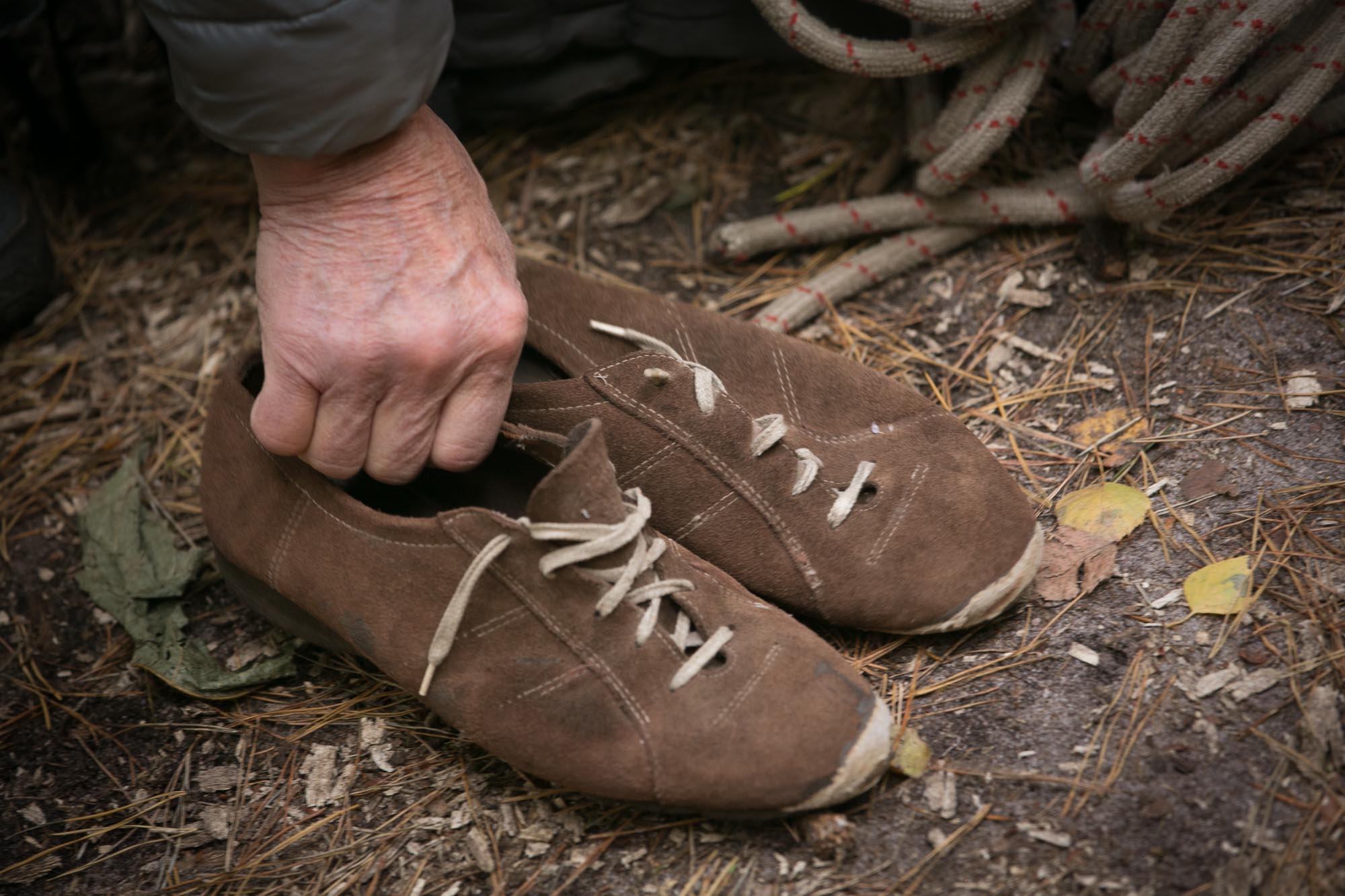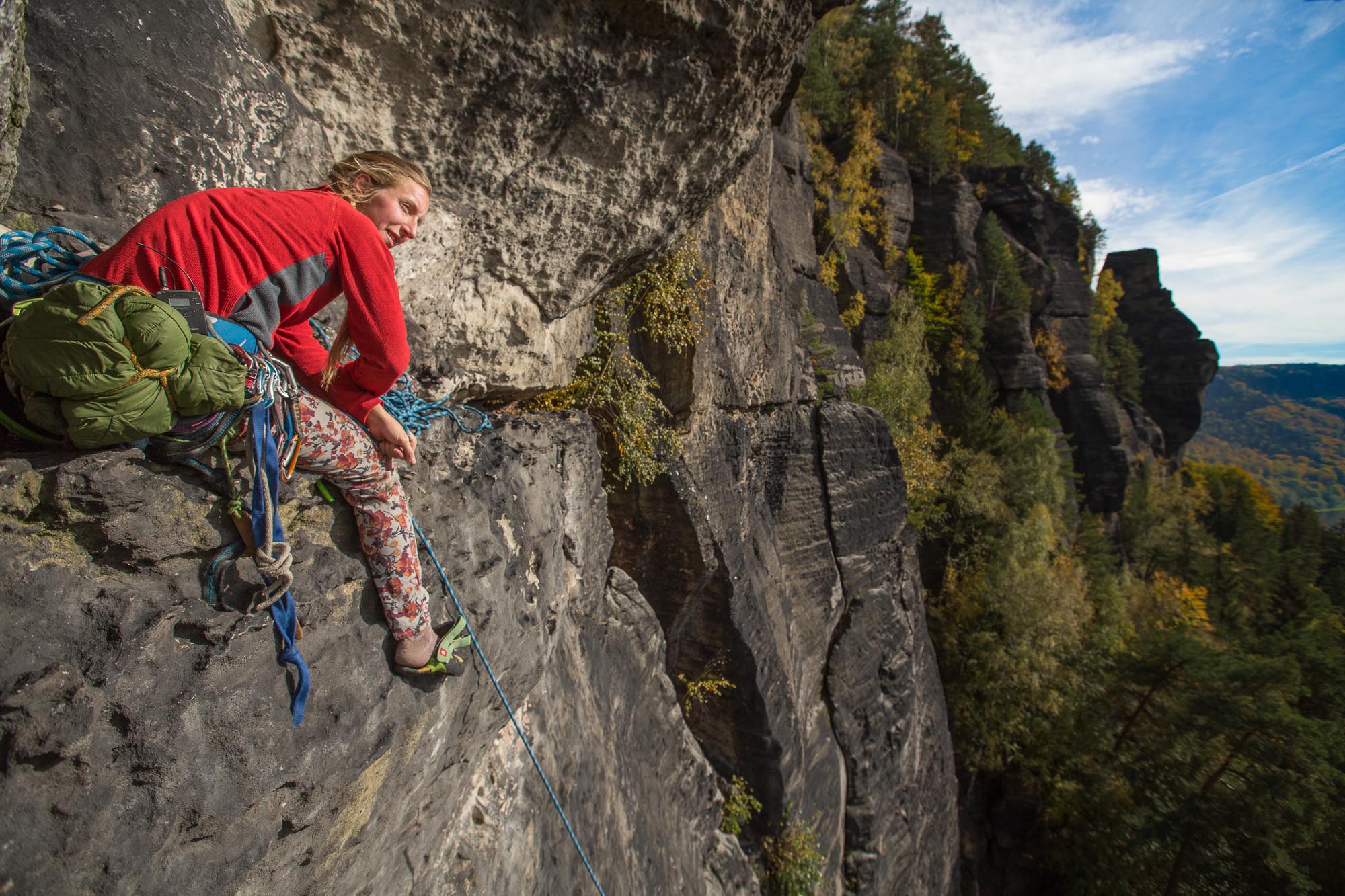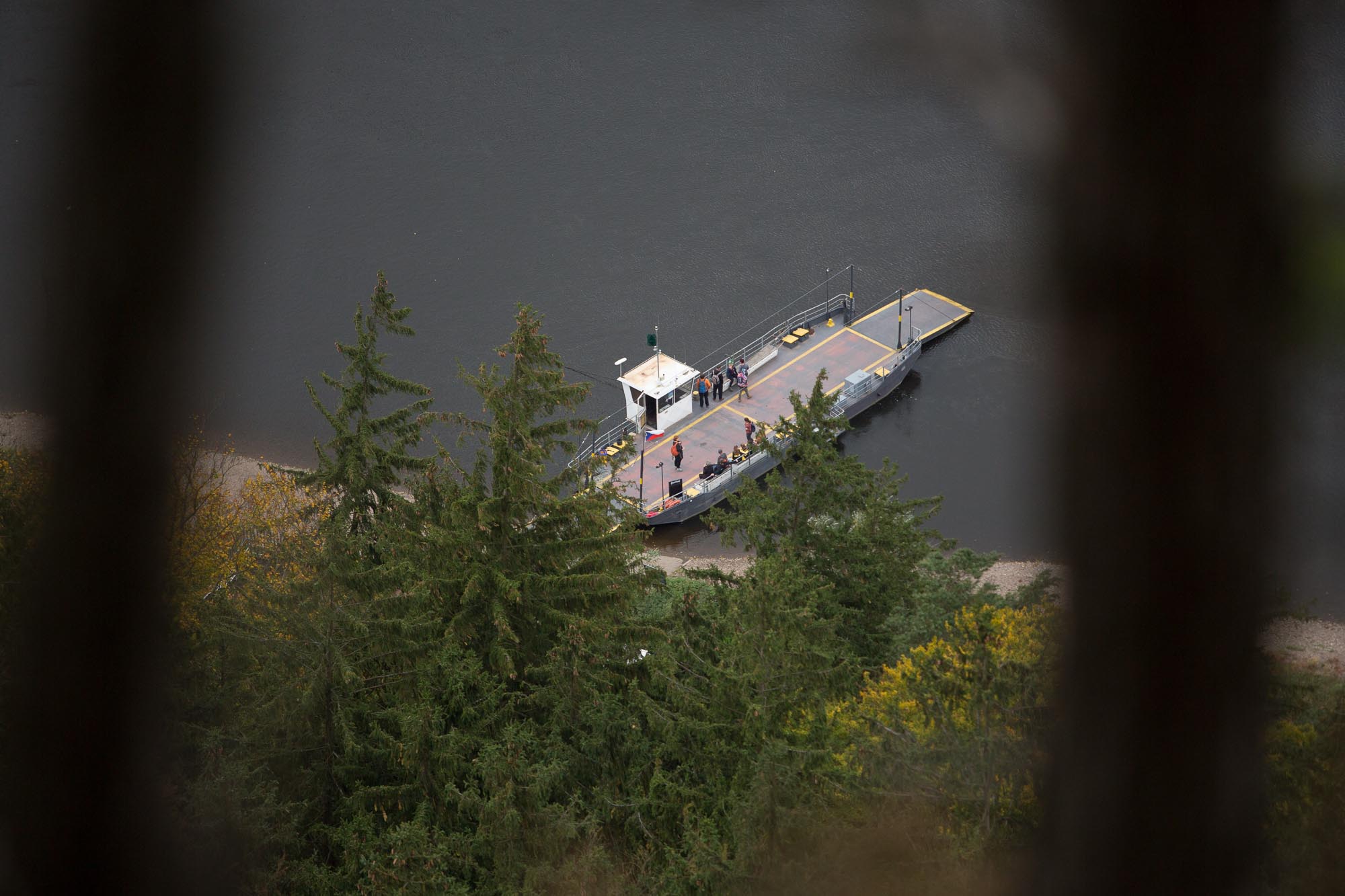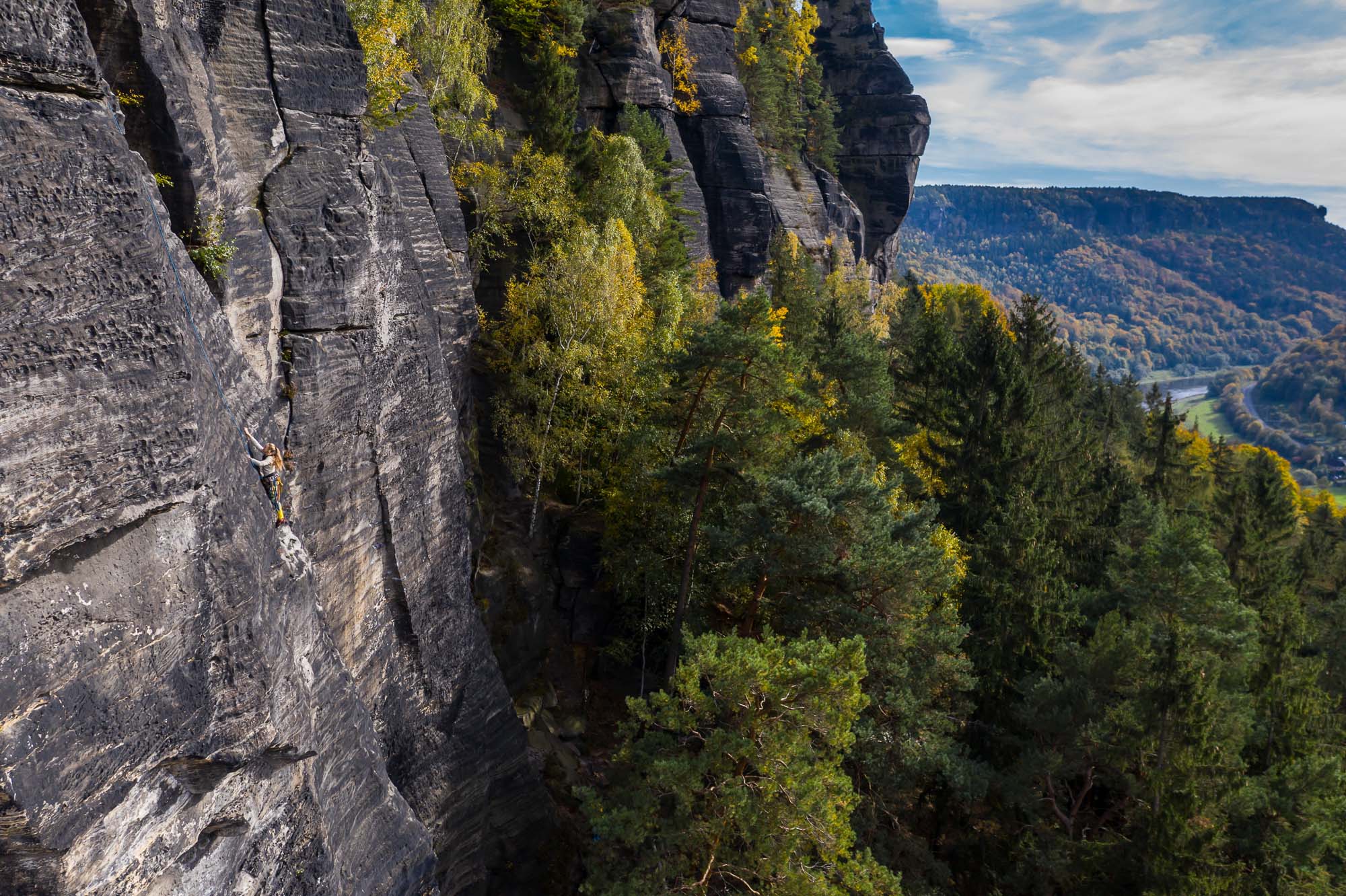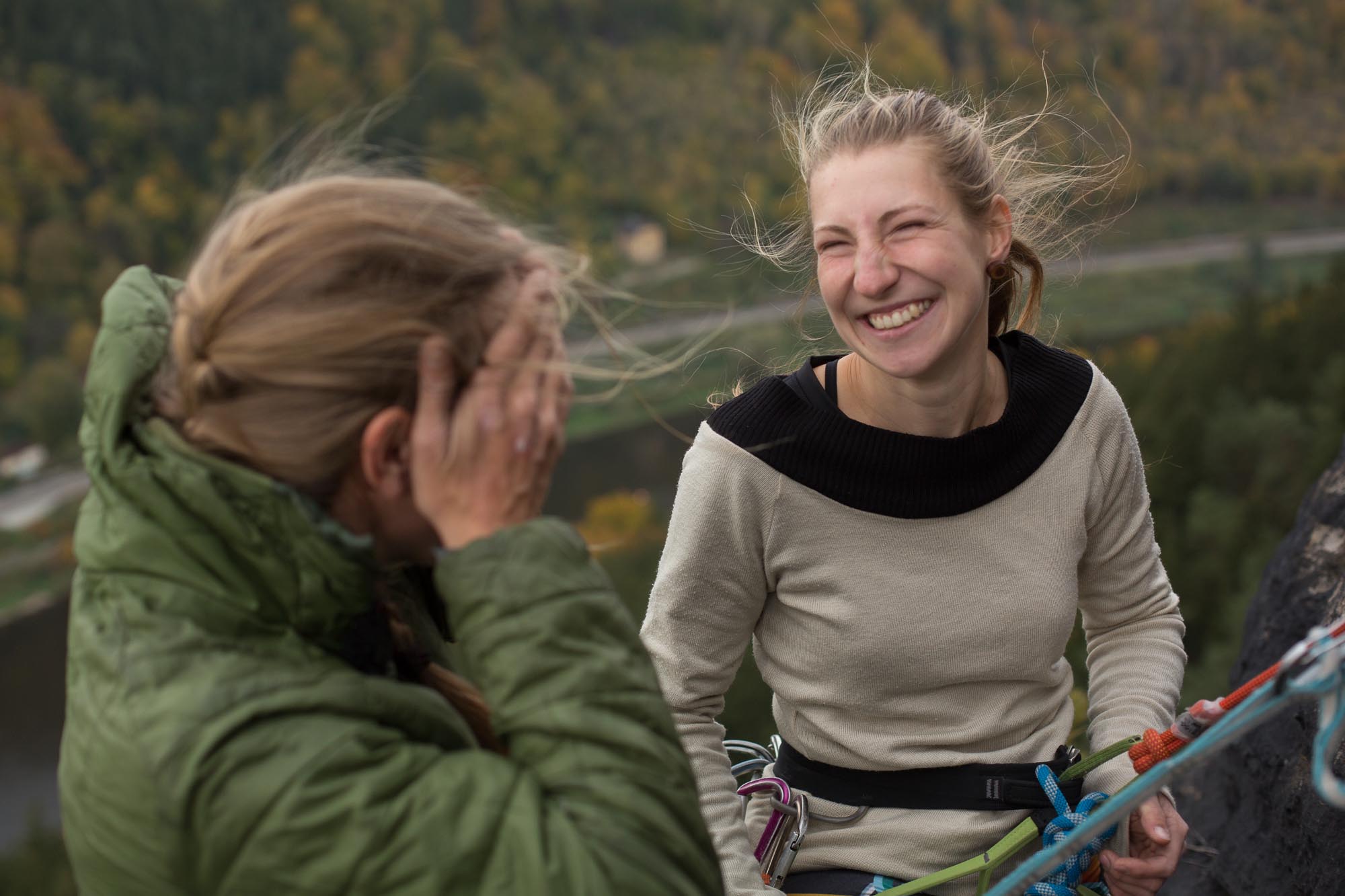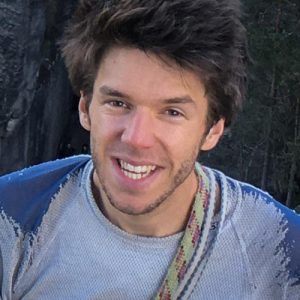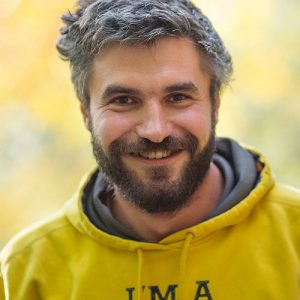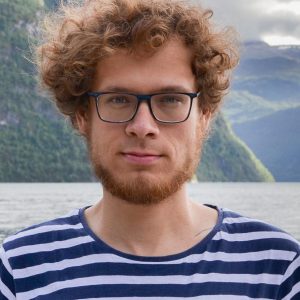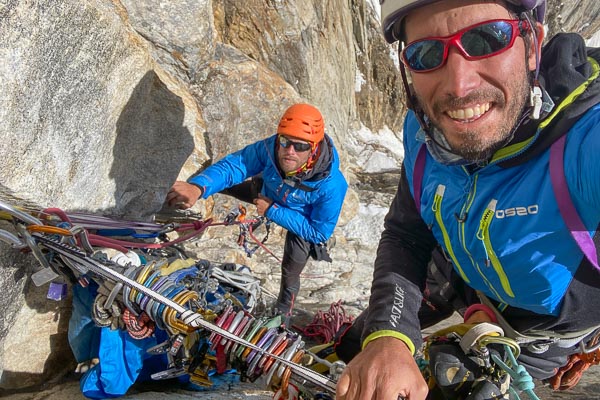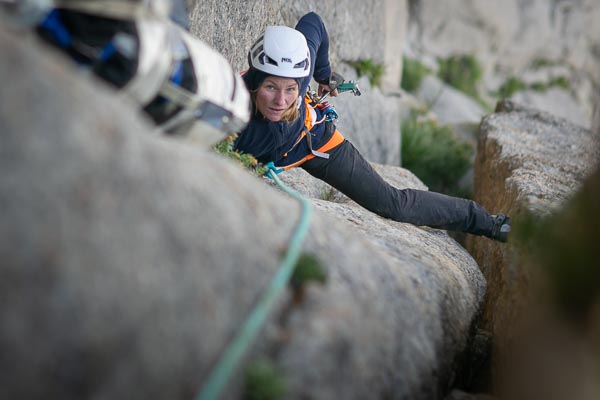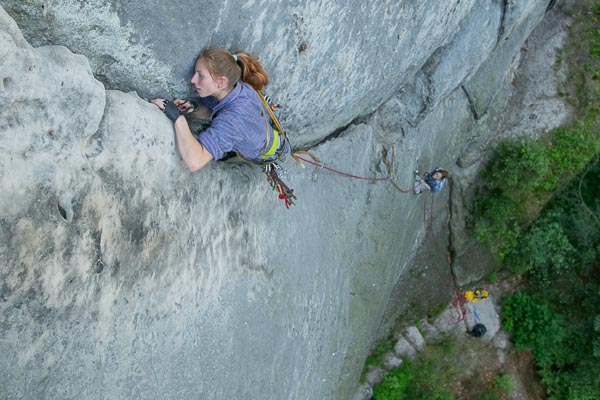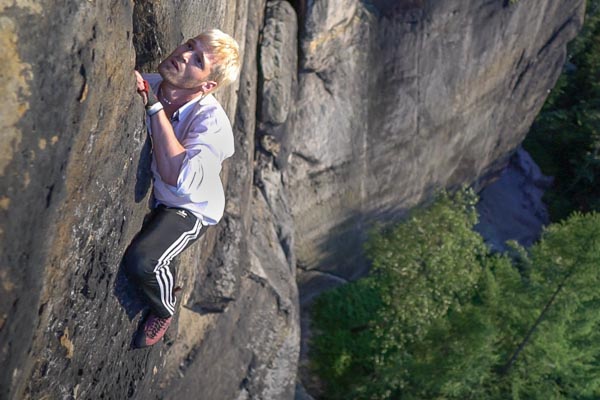FERRYMAN'S WRATH
Three ringbolts for 70 meters of climbing doesn’t seem much – but some climbers just love it airy. Markéta Dařinová and Terka Dudová climbed one of the iconic Elbe classic routes. Who made the first ascent of the route and how did it get its name that translates as “ferryman’s wrath”? Watch the new original video.
PIONEERS AND THEIR IDEAS
As in Saxony, the first lines in Elbe valley were climbed on rock towers rather than massifs. Our German neighbours kept following the tradition but in the 70s, Czech Elbe valley climbers decided to open up the directions on massifs as well. Local climber Jindra “Heinz” Skopec, who is 80 years old recalls: “Pavel ‘Pavouk’ Pochylý from Slovakia gave me the idea. I met him during one of our local get-togethers organized by Ruda Zabilka.”
Heinz finally decided to do the pioneering ascent of “Převozníkův hněv” in 1974 with his brother and and other companions. Among the five authors was also Mirek Štross — they met us 47 years later under the very same crag to see how do people climb it today.
Markéta Dařinová tied to the sharp end of the rope and Terka Dudová followed her. Markéta was happy she could check this line on her evergrowing list of must-climb routes. You know it, you climb one… And as you walk back form the crag, you’re already looking around for the next one.
So what is “FERRYMAN’S WREATH” like?
– Climbing and talking Markéta Dařinová –
ALDO STRAUSS, KUMDO RAUS!
AN INTERVIEW WITH JINDRA “HEINZ” SKOPEC
The ferryman on the Elbe river was also a climber and your friend?
Not exactly, we had Jindra Strauss with us, who was the son of a ferryman and worked as a watchmaker. Today he is probably the oldest living guy in Dolní Žleb village. Jindra was quite a good climber back then. He was also a sort of a detective and a magician — he investigated the Mezná murders…
What happened then?
In 1987, three young hikers/students were killed there… Two boys and one girl. The bodies were found them under the branches somewhere near the Fučík Trail (today named the Gabriela Trail). The StB didn’t track down the murderer, but Jindra and I suspected that a guy from the Border Guard who lived in Hřensko had done it. He was always walking around the area where it happened. When he retired, he was working at a cashier in the parking lot right behind Hřensko. I was there once with my son and I saw the murderous look he gave the boy. I guess he didn’t like people.
Do you remember the old ferryman?
He was German who didn’t speak Czech very well. My mom didn’t speak much Czech either. Some people, like me, never learned proper German, and some people never learned proper Czech. Old Strauss lived in that house by the viaduct in the Žleb, right next to the pub.
He didn’t ferry people the way it is today — using the rope. He had a small boat and used bargepole to push his boat along the bank against the stream towards Děčín. He went as far as he could and then he pushed himself into the stream, which carried him onto the opposite bank, where Nosek had his pub. He went back in the very same way, pushing the boat upstream and floating back.
How often did he ride?
Well, he could give you a ride even at night. We always called out to him from afar: “Aldo Strauss, kumdo raus!” When he was asleep, we’d yell to wake him up. He had a big wolfdog. He and his wife lived in the house by the river where Jindra Strauss now lives. It’s worth a visit – he’s usually happy to tell you the stories from those times… He’s about 85 years old now. (They shouted at the ferryman in the Ústí lingo, meaning: “Alter Strauss, komm daraus!” – “Old Strauss, come out!”)
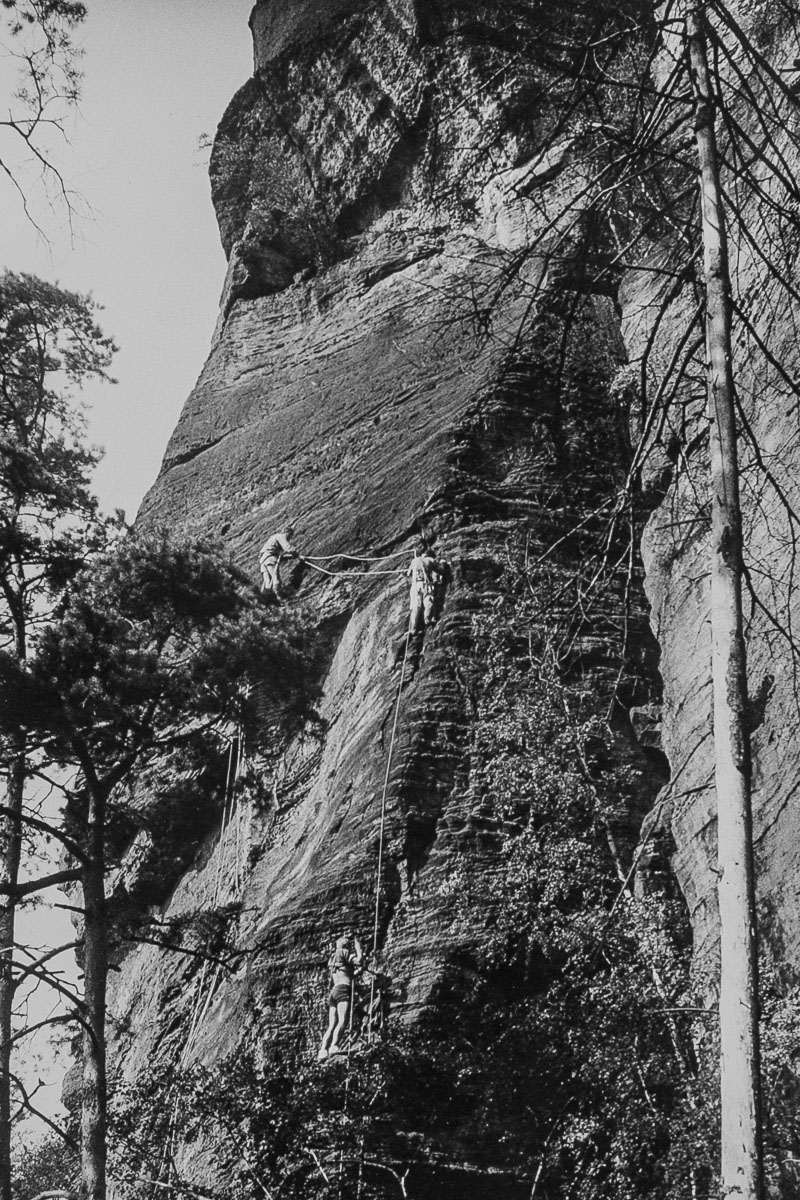
ONE MARK IN THE GUIDE
I’m in the bivouac in my sleeping bag and I imagine tomorrow’s climb. I say good night to my partner and enjoy the smell of the forest and sand, the unmistakable and beautiful smell of Labák. In the morning, however, I wake up to a sound that no rock climber wants to hear — drops rattling on beech leaves. No way! I’m angry for a while but then we just shrug and just cite the old saying — you can’t control the weather, so just ignore it. We take our jackets and go exploring, looking for some lines and projects for when the rocks are dry again. We walk all the way to Titanic and gape at its sheer beauty.
“What’s that?” my partner asks, and I reply that it’s one of the most beautiful classic lines in the Elbe valley, “Převozníkův hněv.” I circle the route in my guidebook and already imagine myself climbing up to the first ringbolt…
Some days later, I’m sitting with guide and I already feel butterflies hoarding in my stomach. Tomorrow is the day. Me and Terka will climb the line. But this time, It’s not just the two of us, but also Standa and Kuba from eMontana, who will film the beauty for us. For a moment, I thought that I shouldn’t really appear in the film — I’m no actor. But then I realized that I can at least share this magic line to the other climbers and show them that one can freeclimb it in the classic clean style. I mean, hopefully. There’s quite some distance between the ringbolts. And what’s more, by some miracle, Standa managed to find and invite the guys who made the first ascent in August 1974. My palms are already sweating and I’m just going to bed!
On the next day, the sun is painting autumn colors all around us, finally, we’re lucky with the weather. We meet Jindra “Heinz” Skopec and Mira Štross, and they accompany us under the route. They tell stories and I feel nostalgic about their lives that used to belonged and still belong to the rocks. It’s an honour for me that they have come this far, and that I can listen to their a funny story about how the line and its name came about.
I kiss the rock and set off to the first ring. One could place some slings on the way to the first ringbolt but climbing feels so nice that I just keep on going, feeling like a kite flying on a loose rope. After a while, I’ll finally place some sling then I clip into the first ring. So this is where they drilled the bolt. Well, I’m not surprised, what follows are some moves along a beautiful ridge and then some fine footwork on the edge. Then a solid sling and a traverse to the second ringbolt. The wind tickles my face and plays a familiar song in my helmet. The following passage looks just amazing. A slightly leaning slab, which Heinz could describe to me move after move even after all those years. Um, does it still count as an OS?
I float through the wall and let myself be guided by the holds, footholds and pockets sculpted lovingly by nature just for me. The ring disappears somewhere in the depths beneath me but I’m fine with it. It’s pure joy and excitement, freedom… Plus, I can feel the support of my faithful and trusted belayer Terka from below. Not that she would help me in such a long runout but I don’t allow these thoughts to enter my mind. I climb to a ledge and build an anchor by swinging a sling around a birch that miraculously grows from god know what. Soon enough, Tereza dances up to me through the wall, confidently and smiling. The wind picks up and the song in my helmet grows louder. So do we climb further? Sure, we do!
“The ring disappears in the depths below, there’s no place for protection, but I don’t mind.”
I cross the wall and disappear over the edge, leaving Tereza and her voice behind. Fortunately, we’re connected by an umbilical cord, which says more than a thousand words. Beautiful, airy and exposed moves lead me to the third ring, where I anchor for the second time and belay. I have a climbing song playing in my head and I imagine how the guys were drilling from the clean climbing position… That must have been something! They were tough guys, and nobody can persuade me otherwise. Terka emerges from behind the edge, smiles at me and I at her, because it’s really beautiful. For a moment, I even laugh, since I think that she has some bird droppings in her hair. Luckily, it turns out to be a mere feather. She joins me at the anchor, we chat for a while and exchange rope coils and gear. Chatting and joking at that height while hanging in the same ring always feels much more real.
I’m excited to see what comes next, and set off further into the passage full of solid crimps and bars. The route gets a bit more difficult but there’s no catch. I find some solid sling placements and follow the holds — this is a real dream climb! I just wish it would go on and on. But each route ends at a certain point — the anchors always wait for you even here in Labák, where the lines seem to be touching the sky. I reach the top, and belay Tereza. Soon, we both stand at the summit and celebrate the moment with a high-five and a hug. It was even better than I could have imagined.
I feel so thankful to the guys, who had the courage to do such a bold first ascent. I’m happy that Tereza joined me and that the boys did such a great job filming us.
I wish good luck, strength, determination and a portion of healthy respect to all those who come here to climb!

ZDENDA FALTYS REMEMBERS
“Ferryman’s Wreath”? That was my first date with my wife. Anchors, hugs and awkward moves at each of the ringbolts… A super long and easy route – the runouts are long enough for you to feel like a real hero. (laughs) I actually went to climb it because my friend told me that one of the rigs was rusty, so I changed it. Today the original ringbolt hangs in our living room above the couch. So yeah, this route became something special to me.
.
.
THANKS FOR YOUR SUPPORT!
Thanks to all readers who support eMontana in producing it’s original articles. If you’d like to help us a little bit, you can send any amount here:
IBAN: CZ28 6210 6701 0022 1265 4881,
other possibilities can be found here.
Translations of our materials into English supports Czech climbing gear producer Singing Rock.
_______________________________


